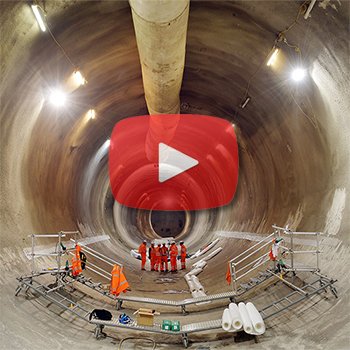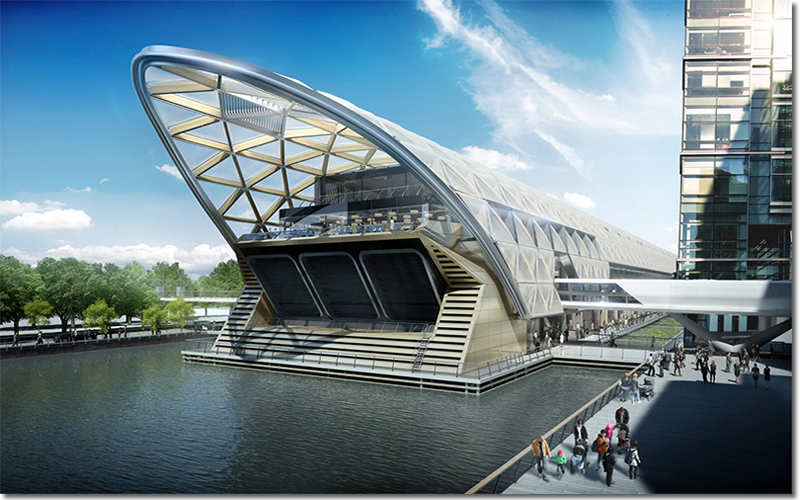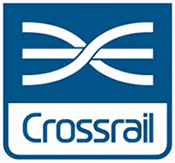Crossrail: Delivering A World-Class Railway That Can Be Operated Sustainably

Crossrail’s intention is to lead the way in constructing and delivering a sustainable and energy efficient railway fit for the future.
Crossrail is one of the most ambitious transport construction projects undertaken in a generation.
As Europe’s largest construction project, Crossrail’s legacy will be more than just the delivery of a world-class railway; sustainability has been at the heart of the project since its inception.
From Reading and Heathrow in the west to Shenfield and Abbey Wood in the east, the Crossrail route covers over 110km of track. It includes 21km of new twin-bore tunnels, 10 new stations and will serve a total of 40 stations. Crossrail will, for the first time, deliver a direct connection between all of London’s biggest employment centres linking Heathrow with the West End, the City and Canary Wharf.
The new railway will increase rail capacity in London by 10%, reduce journey times, ease congestion and improve connections. Services start running in the central, tunnelled section in 2018 and Crossrail will be fully operational in 2019.
The principal reason for building the railway is to secure London’s competitiveness as a world city.
This requires an efficient and reliable transport system that keeps people moving and supports the future population and economic growth.
The challenge is to achieve this responsibly and sustainably, with the minimum environmental impact.
A total of £14.8bn of funding is available for the delivery of Crossrail. The new railway will support regeneration across the capital and benefits the UK as a whole.
Crossrail is estimated to generate at least £42bn for the UK economy.
Crossrail’s intention is to lead the way in constructing and delivering a sustainable and energy efficient railway fit for the future. Crossrail will have a long-lasting impact on how people travel around London and the South East.
Crossrail’s Sustainability Vision
To build Crossrail sustainably
- Seeking to minimise the impact on the environment and the community throughout construction
- Ensuring a diverse supply chain benefits from Crossrail work and that materials used on the project are sourced sustainably
- Providing a legacy of skills, learning, expertise and experience that can be handed on to the next generation of major infrastructure projects
- Moving a step closer to a more inclusive and safer construction industry
To design and deliver a world-class railway that can be operated sustainably
- Embedding energy saving and emissions reduction in the rolling stock and station designs
- Promoting safety, comfort and wider social and environmental benefits in the design of Crossrail stations, trains and public spaces
- Helping to securing London’s place as a competitive world city
This holistic approach is aided by two key priorities within the Crossrail organisation:
- Safety is Crossrail’s number one value. The organisation believes that all harm is preventable, that everyone working on the project has the right to go home unharmed every day and that we must all work together to achieve this.
- Innovation is embedded within the organisation. The innovate18 programme promotes new thinking and new ideas, particularly in the field of sustainability.
By achieving this vision and delivering Crossrail on time and within available funding, Crossrail’s legacy will be a world-class railway which secures London’s place as a competitive world city, a wealth of skills, experience and expertise to assist future major infrastructure projects and a perceptible improvement in the safety and inclusion of the construction industry.
Crossrail’s sustainability story (view video above) is told through the well understood themes of social, economic and environmental sustainability and is designed to meet the aspirations of joint sponsors (DfT and TfL), stakeholders and future passengers.
Crossrail Sustainability Report, 2014
Crossrail’s sustainability report for 2014 outlines a number of economic, environmental and social successes since the construction of Crossrail began in 2009 and demonstrates the green credentials the railway will have when Transport for London (TfL) introduces the new trains from 2017.
The report - the third since the start of the project - also highlights:
- 97 per cent of contracts have been won by UK companies
- 62 per cent of work goes to small and medium businesses
- Close to 2,800 local people from London’s boroughs and/ or the previously unemployed are now working on Crossrail
- Crossrail is on target to achieve its 8 per cent carbon dioxide reduction which would save approximately 57,000 tonnes of emissions.
Source: Crossrail
Related: London’s Crossrail Transportation Infrastructure Tunneling Project Complete

Article Topics
Crossrail News & Resources
London’s Crossrail Transportation Infrastructure Tunneling Project Complete Crossrail Sustainability Report 2014 Crossrail: Delivering A World-Class Railway That Can Be Operated Sustainably Crossrail’s Tunnel Machine Enters Its Final LegLatest in Supply Chain
UPS Struggles in First Quarter With Steep Earnings Decline How Supply Chains Are Solving Severe Workplace Shortages SAP Unveils New AI-Driven Supply Chain Innovations How Much Extra Will Consumers Pay for Sustainable Packaging? FedEx Announces Plans to Shut Down Four Facilities U.S. Manufacturing is Growing but Employment Not Keeping Pace The Two Most Important Factors in Last-Mile Delivery More Supply Chain













